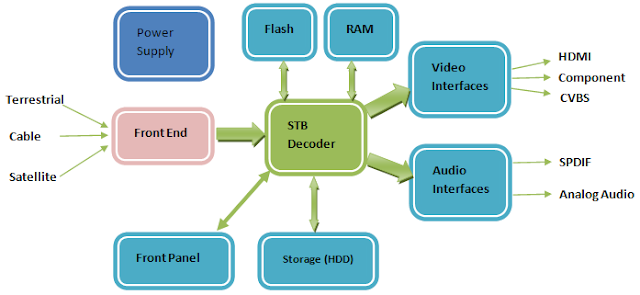A set-top box is a device that enables a television set to become a user interface to the Internet and also enables a television set to receive and decode digital television (DTV) broadcasts.A set-top box (STB) or set-top unit (STU) is a device that connects to a television and an external source of signal, turning the signal into content which is then displayed on the television screen or other display device.
DTV set-top boxes are sometimes called receivers. A set-top box is necessary to television viewers who wish to use their current analog television sets to receive digital broadcasts. It is estimated that 35 million homes will use digital set-top boxes by the end of 2006, the estimated year ending the transition to DTV.
Professional set-top boxes are referred to as IRDs or integrated receiver/decoders in the professional broadcast audio/video industry. They are designed for more robust field handling and rack mounting environments, and are also technically superior, IRDs have the distinct feature of outputting uncompressed SDI signals, unlike consumer STBs which don’t mostly because of copyright reasons.
The signal source might be an ethernet cable, a satellite dish, a coaxial cable (see cable television), a telephone line (including DSL connections), Broadband over Power Line, or even an ordinary VHF or UHF antenna. Content, in this context, could mean any or all of video, audio, Internet webpages, interactive games, or other possibilities.














Комментариев нет:
Отправить комментарий